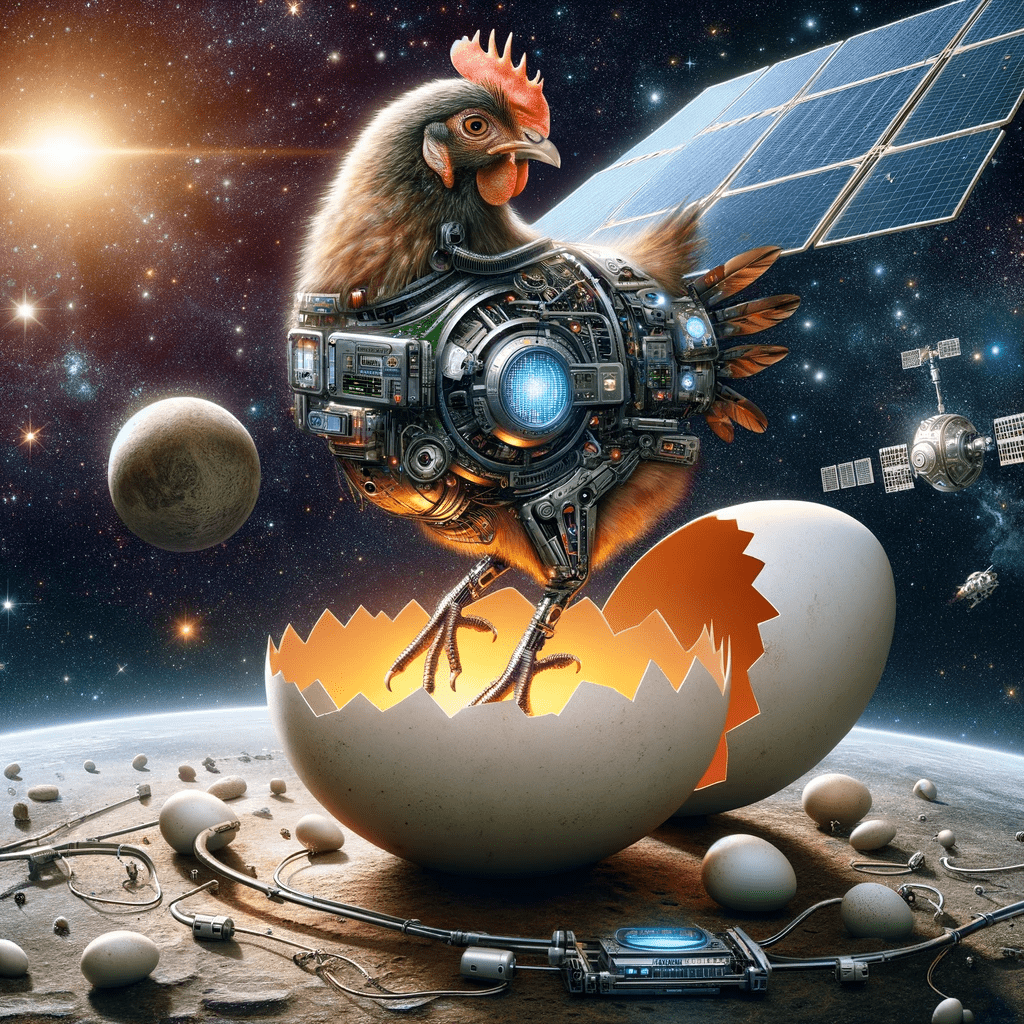Astrochicken

The “Astrochicken” concept was first envisioned by theoretical physicist Freeman Dyson in the 1970s as a way to traverse the cosmic sea. Freeman Dyson, a leading mind at the Institute for Advanced Study in Princeton, New Jersey, was renowned for his speculative and innovative thinking in areas that stretched beyond his main field, bridging the gap between the abstract world of theoretical physics and the tangible realities of space exploration. The Astrochicken represents one such bold intellectual leap.
Dyson’s Astrochicken, a hypothetical biologically-based spacecraft, was an innovative answer to the problem of expensive and resource-consuming space travel. This concept sought to combine biology and engineering, creating a vessel that was part organism and part machine. The entity, much like a chicken, would hatch from an egg launched into space, with the egg serving as a protective casing during the launch. Once in space, the Astrochicken would unfold itself, the organism would grow and mature, and the craft could then commence its exploration of the cosmos. The spacecraft’s biological aspect would be genetically engineered to endure the harsh conditions of space and even utilize solar energy for sustenance, much like a plant performing photosynthesis.
In Dyson’s vision, the Astrochicken would explore the solar system, capable of landing on planetary bodies, moons, and asteroids. Unlike conventional robotic probes, the Astrochicken could repair itself, adapt to different environments, and even use the available resources for sustenance and reproduction. This form of biologically inclined space exploration offers a paradigm shift from the norm, proposing an alternative where the spacecraft is a living entity, able to make decisions and take actions as conditions dictate.
Freeman Dyson, despite being a theoretical physicist, strongly advocated for the intersection of biology and engineering in space exploration. This viewpoint was unique and innovative at the time, and it remains on the fringe of mainstream scientific thought even today (Source: “Disturbing the Universe”, Dyson’s autobiography).
The Astrochicken concept has inspired modern projects like the European Space Agency’s (ESA) initiative to investigate the potential of biology-based technology for space exploration. The ESA has actively been studying the concept of “biological” spacecraft (Source: “The Science of Aliens” by Clifford A. Pickover).
Dyson’s Astrochicken also prefigured some of the core ideas in astrobiology, a discipline that barely existed during Dyson’s time. It predicted that future advances in biology and genetic engineering could be as important to space exploration as rockets and telescopes (Source: “Astrobiology: A Brief Introduction” by Kevin W. Plaxco and Michael Gross).
While some experts regard the Astrochicken as an interesting thought experiment, they also argue that the technology needed to make it a reality is currently beyond our reach. This includes advances in genetic engineering, nanotechnology, and space launch systems that are yet to be fully developed (Source: “Biology in Space and Life on Earth: Effects of Spaceflight on Biological Systems” by Brinckmann).
In books such as “The Starship and the Canoe” by Kenneth Brower, Dyson’s visionary ideas, including the Astrochicken, are highlighted as examples of his unique ability to connect disparate fields and provoke new ways of thinking about our universe.
Freeman Dyson’s Astrochicken stands as a testament to the profound and imaginative capacity of human thought. It represents the potential of harmonizing biology with technology, a blend of disciplines that could redefine the future of space exploration. As we continue to push the boundaries of our technological capabilities and understanding of biology, ideas like the Astrochicken, while far from current technological realities, help us explore potential future avenues for the evolution of our cosmic journey.


